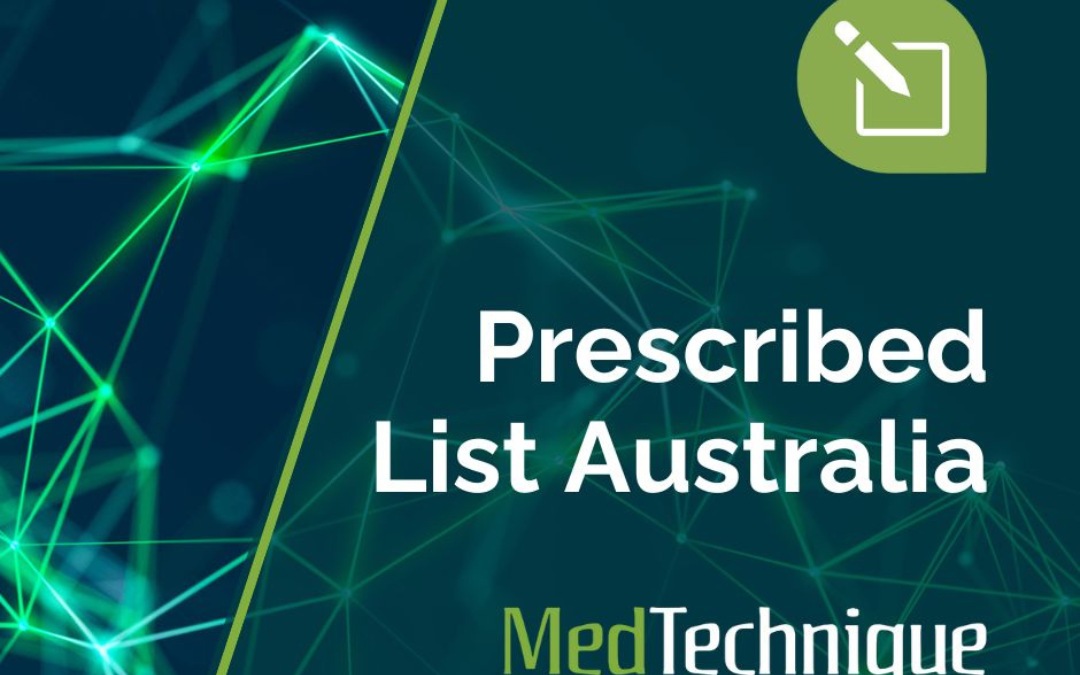The Prescribed List (formerly the Prostheses List) (PL) is a list of medical devices, mainly implantable for which Australian private health insurers must pay a benefit when used during a member’s hospital admission. Inclusion on the PL is commercially valuable to suppliers of medical technology and often inclusion on the PL is essential to commercial success.
Key Reforms to the Prescribed List
Over the past few years, the PL has undergone significant reforms, including:
- Health Products Portal (HPP): A new online application platform.
- Tiered Application System: Based on the risk level of devices.
- Cost Recovery: Introduction of cost recovery measures.
Application Tiers
There are three application tiers for the Prescribed List Process:
Tier 1: Departmental Assessment Pathway
This is intended to be a relatively simple application process for devices classified by the Therapeutic Goods Administration as IIb or below and the devices are very similar and interchangeable with existing items on the PL. A good example would be a standard bone screw.
Tier 2: Clinical (Tier 2a)/Focussed HTA Assessment Pathway (Tier 2b)
This is the pathway for TGA Class III devices, Part C devices, all ophthalmic devices and any applications for novel devices or those that are applying to higher benefits. This pathway is likely to require specific clinical evidence for the device and novel devices will need to undergo an economic assessment as well.
There are specific evidence requirements for some devices in the Spinal and Neurosurgical clinical group, the Cardiac, Cardiothoracic and Vascular devices group, joint replacement devices ophthalmic devices, implantable hearing systems and sacral neuromodulation devices. These can be found on pages 30-33 of the Prescribed List Draft Guide.
Tier 3: Full HTA Pathway
This is a full HTA pathway and is for devices requiring assessment by MSAC to establish comparative clinical and cost effectiveness. This would likely be for technologies that are novel, first in class or are likely to have a large financial impact.
Experience to Date
Challenges with Evidence Requirements:
The specific evidence requirements can sometimes be quite onerous and out of step with the evidence usually required to bring most devices to market. This has been communicated to the Office of Health Technology Assessment by the industry and other interested parties and it is hoped that the next draft of the PL Guide will rationalise some of the evidence requirements.
Implementation Issues with HPP:
All new systems have teething problems, and it is fair to say that the implementation of the HPP for the PL has been quite problematic. This has been exacerbated by the difficulty of gaining timely help from the Department of Health. HPP support is very useful but is not always timely. Advice from the Department on process is only available by email and the reliability of this can be considered random at best. Emails may take days or weeks to be responded or go unanswered altogether. The Department is working to improve this.
Unanticipated Technical Document Requests:
There have been requests for additional technical documents that have not been mentioned in the PL Draft Guide even for relatively simple applications. Therefore, it is difficult for some applicants to predict what is required. It is advised that applicants have as much information on hand as possible. This can include specifications of individual catalogue items, detailed product brochures etcetera, even for Tier 1 applications.
Looking Ahead
There is optimism for process improvements as the industry and other stakeholders continue to provide feedback to the Office of Health Technology Assessment. The ongoing dialogue is expected to refine the evidence requirements and streamline the application process, making it more predictable and efficient for all parties involved.
At MedTechnique Consulting, we have a proven track record of successfully listing hundreds of products on the Prescribed List (PL). As policies continue to evolve and systems are refined, it is crucial to have accurate and timely advice to ensure your products are included without delays.
Why Choose MedTechnique Consulting?
- Expertise: With extensive experience in navigating the Prescribed List process, we understand the intricacies and challenges involved.
- Strategic Guidance: We provide tailored advice to help you meet the specific evidence requirements and streamline your application.
- Comprehensive Support: From initial consultation to final submission, we are with you every step of the way.
Get in Touch
If you need more information about the Prescribed List, assistance with your application or market access for your medical device, please contact us directly. We’re here to answer your questions and provide the support you need to succeed.
Contact and connect with us
- Email Us: : info@medtechnique.com.au
- Call Us: + 61 448 058 600.
- Visit Our Website: MedTechnique Consulting
- Connect with us on LinkedIn: HERE
About the Author
Sarah Griffin, Director of MedTechnique Consulting. Sarah is an experienced health economist, reimbursement strategist, health policy advocate and speaker.
Connect with Sarah Griffin on LinkedIn.
If you would like to learn more about Sarah’s speaking experience for your next event please email: Kim MacDonald, Spindrift Marketing




